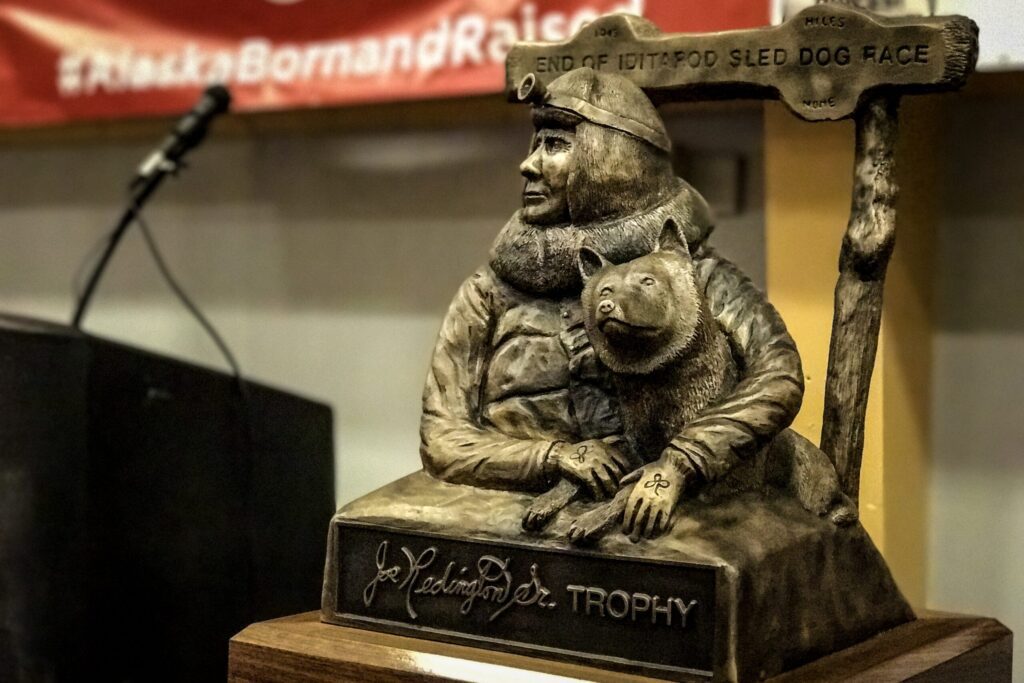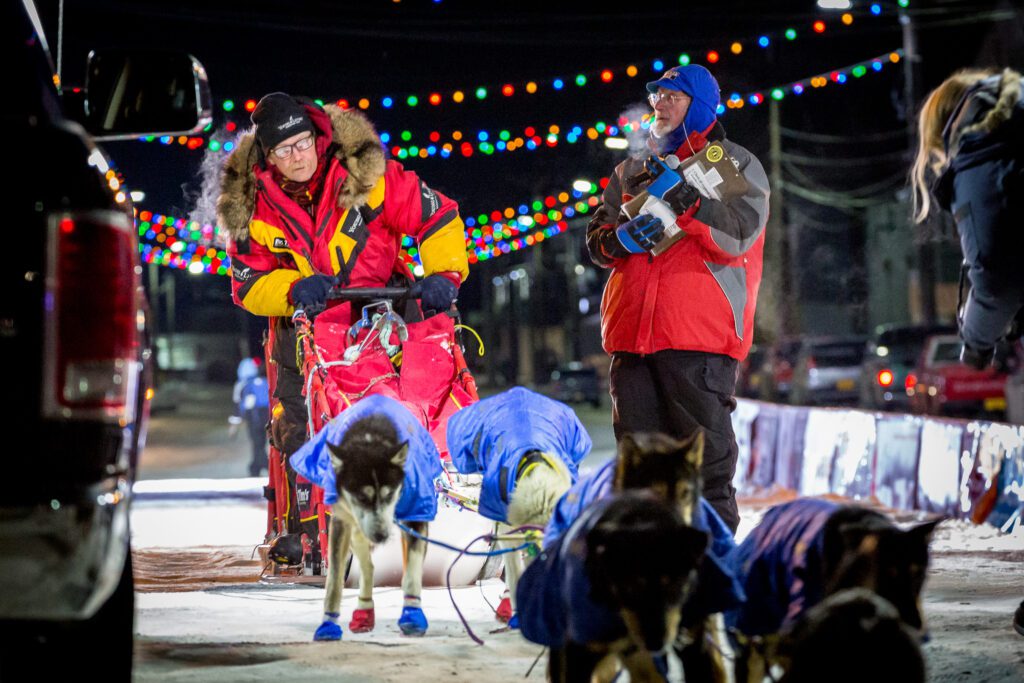Red, white and blue flags flew high at this year’s Iditarod start line, but they weren’t the flags one might expect at an American race. These flags bear the Scandinavian cross, and they were flown by fans who came out to cheer on more than ten percent of the race field. There are more Scandinavians in this year’s Iditarod than ever before.
Ve elskar deg: it’s one of the cheers a group of fans threw out as dog teams surged down the trail out of Willow. Dan Lien appears to be the group’s ring leader.
“We are proud members of the sons of Norway in Anchorage, and so we bring our flags and yell a few phrases at ‘em.”
Lien says they come every year, but this one is special because there are eight mushers from Norway… and one Swede.
“We yelled at him down the trail, we said we don’t have any Swedish flags, and he said close enough.”
It comes as no surprise that a region packed with wilderness, mountains, and a winter season on par with Alaska’s is home to mushers like Robert Sorlie. He brought a dog team from Norway for a sixth shot at a top finish.
“It’s the biggest and the most powerful race in the world so everybody wants to do this race, you know.”
In 2003 and 2005, Sorlie drove his team to victory. He’s the only champion that isn’t American. He’s also been known to sing to his dogs.
“Yeah I think I will sing some songs for them, but I will not sing it for you, because when … I’m not ready to sing it on the radio, no.”

Sorlie’s competitor, Sigrid Ekran, also brought a team from Norway. She says she doesn’t have big expectations for her fourth Iditarod, but she could be a worthy competitor, having won three European world championships in the last five years. She’s claimed victory in both of Norway’s largest and longest sled dog races: the Femondsløpet once and the Finnmarksløpet twice.
“Scandinavia is definitely a good place to run dogs, and there’s a lot of good dog mushers there now. I think everyone that runs long distance has a dream of running the Iditarod. The Iditarod is like the Olympics of long distance, you know.”
“Yeah, that’s true. Absolutely.”
Mats Pettersson is this Iditarod’s lone Swede.
“When you’ve done this one time, you want to be here. It’s the number one race, but I hope also more people from the US can come over to Scandinavia in the long run and we could have more races. That would be the best, I think.”
Race officials from the Finnmarksløpet reportedly visited with Iditarod Trail Committee officials earlier this winter to discuss future cooperation, but the outcome of that meeting is unclear.
https://www.instagram.com/p/BClj2qqQajX/
In the meantime, Pettersson will shoot for a top-ten finish in this his third run to Nome. He says the most competitive among the Norwegian teams don’t intimidate him.
MP: I get along with all these Norwegians, and we are really friends out on the trail.
ES: So, there’s no Swedish-Norwegian rivalry?
MP: No, only in skiing – the Norwegians are better in that, but we are better in ice hockey!
There’s one Scandinavian whose race plan stands out more than any other.
“I’m going to do a long camping trip after the race.”
It’s been 21 years since Ketil Reitan has driven a team on the Iditarod trail. From Nome, he says he’ll mush back to his home in Kaktovik, more than twice the distance of the actual race.
“There’s no trail and no trail markers. So we are looking forward to that, and we are going to stop in the villages and visit and meet lots of people, so we are looking forward to that.”
Reitan says the seeming Scandinavian Iditarod invasion is really nothing new.
“Ten percent is nothing. In the earlier races in Nome, a hundred years ago, almost half the mushers were Norwegian, so ten percent is nothing.”
But a hundred years ago, Alaska was only a US territory, and the famous Serum Run to Nome hadn’t even taken place.







